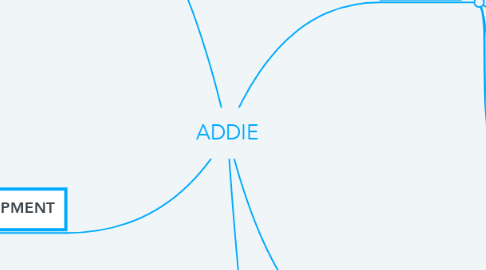ADDIE
by R J


1. ANALYSIS
1.1. Analyze current situation (training, knowledge gaps, audience, etc.) to determine the training goal
1.2. Establish the instructional goals and objectives
1.3. Identify the current learning environment, learner skills, and knowledge
1.4. Determine the training methodology (live, blended learning, virtual training, etc.)
1.5. Determine the media types (tablets, 3D printers, VR Goggles, mobile phone, etc.)
1.6. Questions: Who is the audience and their characteristics? Identify the new behavioral outcomes. What types of learning constraints exist? What are the delivery options? What are the online pedagogical considerations? What is the timeline for project completion? What is the point of the training? Why are we doing it? What type of behavioral change is desired? Will training actually help? How can we improve the situation and achieve the business goals through training?
2. DEVELOPMENT
2.1. This is an iterative process of building content, making changes, and rebuilding to meet feedback
2.2. Use the storyboard and prototype to guide creation
2.3. Add graphics, chose colors, and fonts that will appeal to the audience
2.4. Question: Can the learner progress in the way I designed the course?
2.5. Test the course for grammar, spelling, syntax, accuracy of content and utility of navigation
3. EVALUATION
3.1. Developers and testers routinely evaluate course to ensure it is meeting learning objectives
3.2. Summative assessment would include feedback from users.
3.3. Use surveys from learners at the end of the course as feedback and use in the analysis phase
3.4. Questions: What is the formative assessment? What is the summative assessment? Did we meet the goals of the analysis phase?
3.5. Identify other training requirements
3.6. Change media types of appropriate
4. DESIGN
4.1. Create storyboard for ideas
4.2. Determine: learning objectives, assessment instruments, exercises, content, subject matter analysis, lesson planning, and media selection
4.3. Determine a strategy, delivery method, structure, duration, assessment, and feedback
4.4. Define implementation and training administration requirements
4.5. Decide program format and mode of delivery
4.6. Quantify the project development, implementation, evaluation cost, and the effort required to implement the plan
4.7. Create prototype and test it
5. IMPLEMENTATION
5.1. Upload course into LMS
5.1.1. Use pilot group
5.1.2. Test course for bugs, etc.
5.1.3. Rebuild course content if necessary
5.1.4. Open course to everyone
